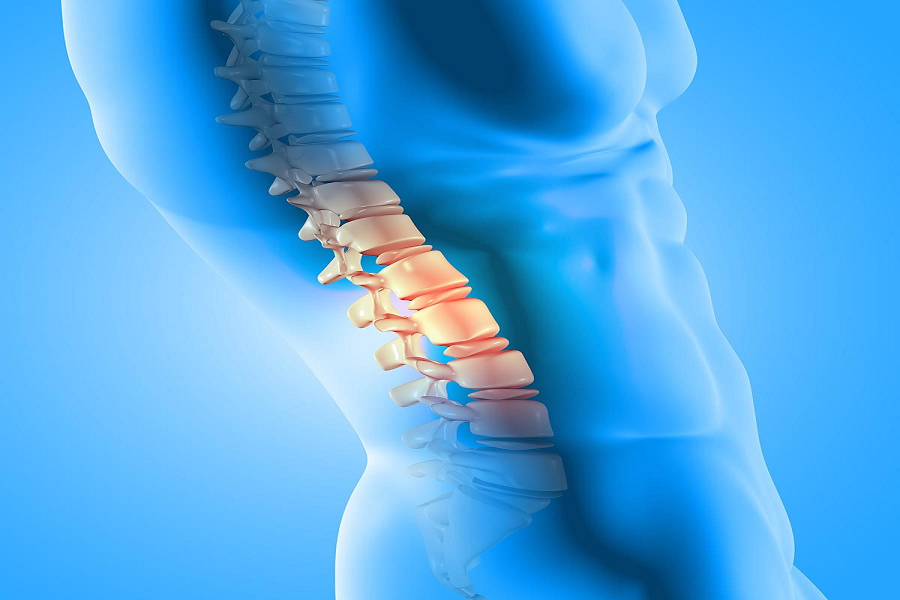One of the more unpleasant consequences of aging is that your joints start to wear out, often for no apparent reason. This joint wear and tear is frequent not only in the knees and hips but also in the spine. The specific cause of spine joint wear is unknown, however, it could be a combination of variables such as performing a lot of lifting, having a family history of spinal difficulties, or having a spine accident. This is a type of arthritis in which the cartilage in the spine joints begins to wear away. Regardless of the etiology, it is well recognized that arthritis of the spine frequently worsens with age for no apparent reason.
Who is at risk for degenerative disk disease?
The most prevalent age group for degenerative disk disease is the elderly. Some risk factors for developing degenerative disk disease include:
- Acute injuries caused by falls
- Obesity
- Symptoms are more common in women than in males.
- Smoking
- Working in a physically demanding occupation
What are the signs and manifestations of degenerative disk disease?
Neck and back discomfort are the most prevalent symptoms of degenerative disk disease. The pain may come and go, which includes:
- They range from mild to severe and disabling.
- Then radiate to the buttocks and thighs.
- Extend to the arms and hands.
- Worsens with sitting or after bending, lifting, or twisting.
- causes weakness in the leg muscles or foot drop, which may be a sign of damage to the nerve root.
What causes these symptoms of arthritis?
Figure 1: The spine in the human body
The spine is your body is roughly divided into three parts. The cervical spine is located in your neck, the thoracic spine is located in your chest, and the lumbar spine is located in your low back. The spine is made up of vertebrae, which are bones, and discs, which are soft spacers between the vertebrae. The vertebrae are formed of strong bone, which gives the spine stiffness and allows people to stand erect.
Discs are specialized structures that serve as shock absorbers between bones. They cannot be seen directly on X-ray because they lack calcium, but they can be seen with magnetic resonance imaging (MRI). Discs are best imagined as cream-filled donuts, or as jelly-filled radial tires. The outside of the disc is robust and hard, similar to that of a radial tire, while the inner is filled with a softer, jelly-like substance. This makes the disc collapsible, reducing the load on the bones. The jelly portion of the disc continues to dry up as you get older.
This may not happen at all, or it may happen to one or more discs for unknown reasons. The radial tire component begins to crumble when the disc dries out. This causes the bones on either side of the disc to close in on each other.As the bones get closer together, they become more stressed. The joints that surround the bones are likewise overstressed. The bones and joints respond by forming spurs (bony growths), which can eventually squeeze the nerves that lead to your arm. This nerve pinching can produce discomfort as well as the symptoms listed above.
Please take away my pain!
To diagnose degenerative disc disease, the doctor will study the patient’s medical history and do a physical exam.Your doctor may also perform a physical exam to check your:
Nerve function:
Your provider may test your reactions using a reflex hammer. A poor or non-response could indicate that you have damaged or crushed nerves.
Pain scores:
To assess your pain levels, your provider may touch or press on certain parts of your back.
The strength of your muscle :
Muscle weakness or shrinkage (atrophy) could indicate nerve injury or deteriorated discs.
To gain a better look at the discs and bone structures, the doctor may prescribe imaging tests such as X-rays, magnetic resonance imaging (MRI), or computed tomography (CT) scans. This can aid in the diagnosis.
Are there any treatments available for my degenerative disc disease?
The following treatments focus on strengthening the muscles that support the back and alleviating symptoms:
- Nonsteroidal anti-inflammatory drugs (ibuprofen, naproxen sodium) or pain relievers (acetaminophen).
- Physiotherapy
- Corticosteroid injections into the disc space.
- Surgical option: artificial disc replacement, spinal fusion.
Are there any home remedies?
Taking an active role in your own treatment is one of the greatest strategies to manage degenerative disc disease.
You may:
- Put heat and cold pack at pain area
- Do simple physical therapy exercises at home.
- Modify your daily activities that aggravate your back, but don’t become sedentary.
- Quit smoking
- Maintain a healthy weight
- Do yoga
Lastly, degenerative disk disease develops when the spinal discs deteriorate. People often experience back pain and stiffness when these disks wear out. Nonsurgical treatments such as physical therapy and spinal injections may provide pain relief. Home treatments such as heat and cold therapy can help some people relieve discomfort. If your discomfort is severe, spinal injections or spine surgery may be beneficial. Asking a doctor can help you determine which treatment is ideal for you.


